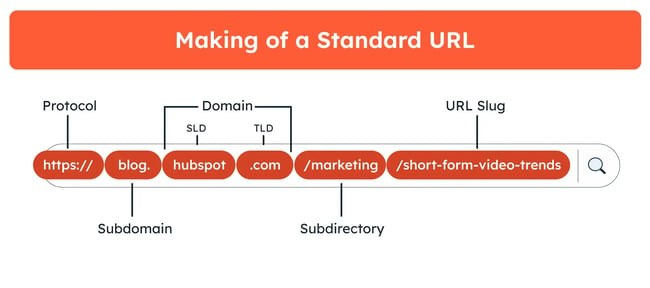
SEO-Friendly URL Structure: Essential Best Practices for Search Rankings
URLs are like street addresses for the internet, helping users and search engines find specific webpages. A well-optimized URL structure is crucial for SEO success and user experience.
A typical URL consists of:
- Protocol (HTTP/HTTPS)
- Subdomain (www, blog, shop)
- Domain name
- Subdirectory
- Slug

URL structure flowchart
12 URL Best Practices for SEO:
- Keep URLs simple and descriptive
- Content sites: example.com/category/post-title
- Ecommerce: example.com/product-category/product-name
- Service sites: example.com/service-category/service-name
-
Standardize naming conventions across your site
-
Limit URL structure to three hierarchical levels
-
Avoid including dates in URLs
-
Remove unnecessary words from slugs
- Aim for 60-70 characters
- Keep essential words for readability
- Handle dynamic URLs carefully
- Optimize controllable elements
- Don't worry about necessary parameters
-
Include relevant keywords naturally
-
Avoid keyword stuffing
-
Make URLs reader-friendly and self-explanatory
-
Use hyphens to separate words
- Correct: example.com/this-is-correct
- Incorrect: example.com/this_is_wrong
-
Use lowercase letters consistently
-
Ensure unique slugs for each page
- Avoid duplicate content issues
- Use canonical tags when necessary

Woman working at laptop desk
Remember: URLs are a stable foundation for your website. Getting them right from the start prevents the need for complex redirects later. Focus on creating clear, descriptive URLs that serve both search engines and users.
For best results, combine these URL practices with other SEO fundamentals like quality content, proper link building, and technical optimization.
Related Articles

How to Include Business Names in SEO Blog Titles: Best Practices for 2024

